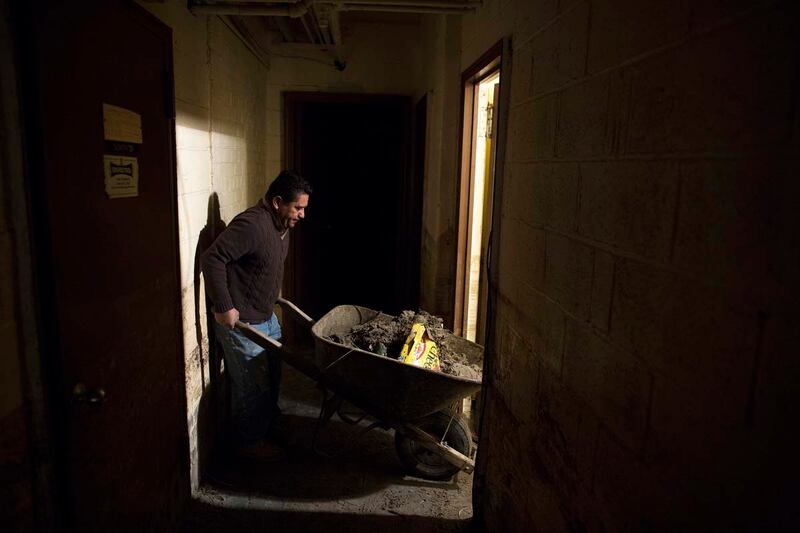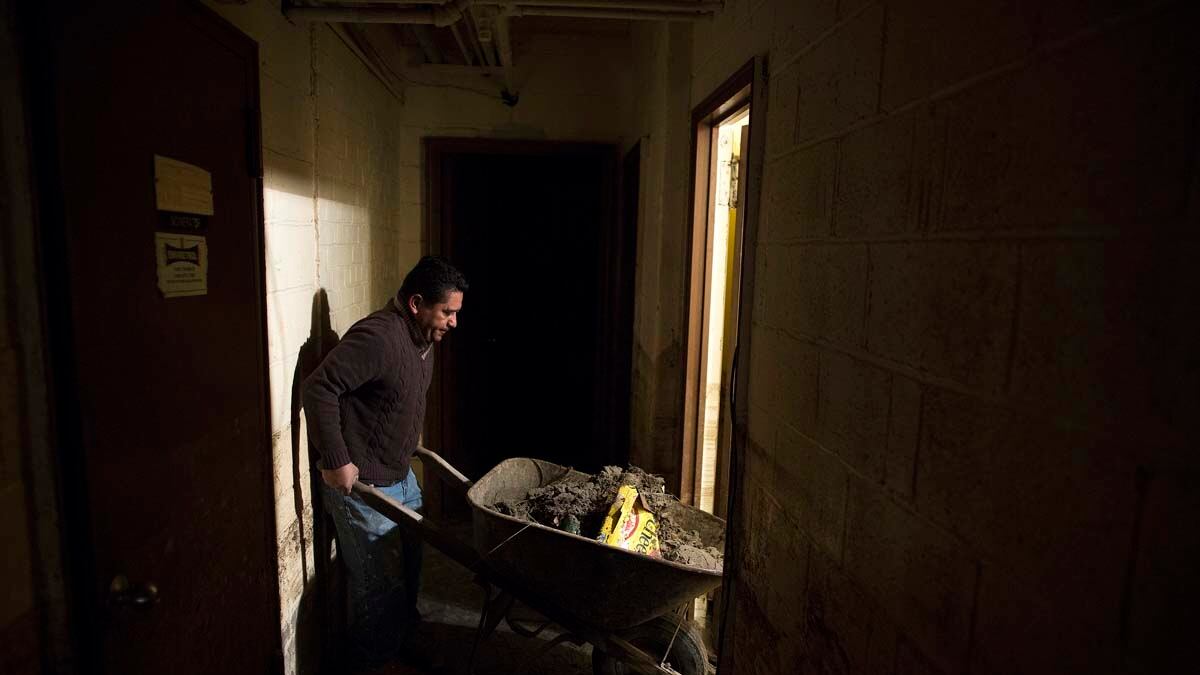When Stephanie Shih pulled her pickup truck up to Bayfield Avenue, a waterfront street of Rockaway Peninsula in Queens, she found a man pushing a wheelbarrow of debris in front of his storm-wrecked home. It was two weeks after Hurricane Sandy hit and he was all alone. Shih and her friends were the first to offer him help.

“You could tell he was really relieved and surprised to see us because at that point he wasn’t expecting anyone to come,” she remembers. “FEMA is there and the Red Cross is there, but not a single person had been to his house.” The man hadn’t even been able to ask for help—but unbeknownst to him, three other people had done so on his behalf through a mobile system designed by Shih. The four of them got to work, and by the end of the day had removed the debris and cleaned out his entire first floor, which had been destroyed by four feet of water during the storm.
To thank for the speedy assistance is an innovative new mobile campaign: Occupy SMS. After volunteering in the aftermath of the hurricane, Shih realized that there were thousands in remote locations untouched by relief efforts, while the central areas were overwhelmed with volunteers and supplies. The 26-year-old, who has a background in tech and nonprofit work, devised a mobile system that would instantly and directly connect those in need with the help they require.
In an era of complicated mobile technology, its selling point is simplicity—there’s no app to download, webpage to load or number to dial, all of which are difficult in hard-hit areas with limited cell and internet service. Those seeking aid for themselves or others text in “Sandy” to 69866, while people offering assistance send “Mutual Aid” to the same number.
Within the system, volunteers are matched up with someone in the general vicinity who needs the help they’re providing (pumping, cleaning, supplies, food), given their information, and asked to confirm their willingness to deliver aid. Once a reply of “yes” is received, the case is taken off the database.
The system had a remarkably swift transition from idea to concept to creation. On Friday Nov. 9th, five days after Shih conceived of the idea, it was up and running, with the help of tech firm Mobile Commons, who offered to pay for the system and provided use of its platform.
Just a week later, Occupy SMS has filtered 1,700 messages through its system. Shih says they represent about 115 people requesting and receiving help, and estimates each volunteer has submitted 2 to 3 offers of support. The scale of each project undertaken by a volunteer means it’s unlikely more than one or two can be completed in a day. With that math, the amount already accomplished shows Occupy SMS on a fast track to becoming a major player in the relief effort.
The program operates in the areas hit hardest when Hurricane Sandy swept through the east coast at the end of October: Coney Island, Staten Island, and the Rockaways. It aims to stretch into the outer areas that aren’t yet being focused on by mainstream efforts.
“When we were down there on the ground we found the volunteers were sticking to the main areas, either the areas they were used to going [to], or the areas where they knew the subways or where the closest distribution hubs were,” Shih remembers. “But it was really the remote areas where the less privileged residents live who need the most help.” The idea is that via text someone who might not be within the normal stomping path of major relief organizations can get direct attention, and fast.
“There were a lot of people who thought, ‘We don’t need technology right now, we need hands on the ground,’” Shih says. “It’s hard to explain how a text message, which is seemingly low tech and simple, could be doing all this stuff on the back end.” So far, a partnership with Occupy Sandy has spread the word via fliers and Web site banners. Canvassing volunteers have been helping by going door to door and texting in for those without cell phone capacity. Shih hopes to eliminate “the huge bottleneck of volunteers who wanted to help but didn’t know how.”
Staten Island native Craig DiFolco, who teaches new media at the Marymount School of New York, jumped into aid efforts when the storm hit, serving as a liaison between those on the ground and those with time or tools to spare, building leading volunteer Facebook pages and creating websites. He first used Occupy SMS last Sunday, grabbing addresses from the database and delivering them to relief sites in their areas to cut down the time volunteers spend knocking on doors asking to help. “If I could spend my time doing some of that canvassing through Occupy SMS, they could spend their time actually getting into the houses that need cleanup,” he says.
Both Shih and DiFolco think crowdsourced and grassroots aid is more equipped to make significant progress than the large relief efforts. The day Shih went to help that man on Bayfield Ave., she saw the first sign of Red Cross assistance: a truck passing out bananas and pound cake. “It’s a nice gesture but that is not what this neighborhood needed at this time. These people had food...what they really needed was manpower,” she says. “Red Cross, they’re there. FEMA, they’re there. But the real work I see being done—in terms of relief, supplies, basic day-to-day needs, cleaning up—it’s all being done by volunteers and community leaders.”
Shih says she hopes to repackage the system for use in future disaster zones. But for now she’s focusing on getting the Occupy SMS number out there. There are still thousands of destroyed homes to be gutted, basements to be pumped, pantries to be restocked.
The budding project’s comparative success is especially impressive when considering the constraining circumstances it was conceived under, not to mention its unorthodox leadership model. It’s backed by a team of three, one of whom Shih hasn’t even met yet—Talisa Chang, a marketer who works at Foursquare, offered her assistance via Facebook. But they fit right in with the jumble of the social media-backed and virtually structure-less system of relief that emerged in the post-Sandy days.
“Nobody really knows who anybody is or what anybody’s doing,” DiFolco laughs. “Everyone just knows everybody is trying to help.” One text at a time.






